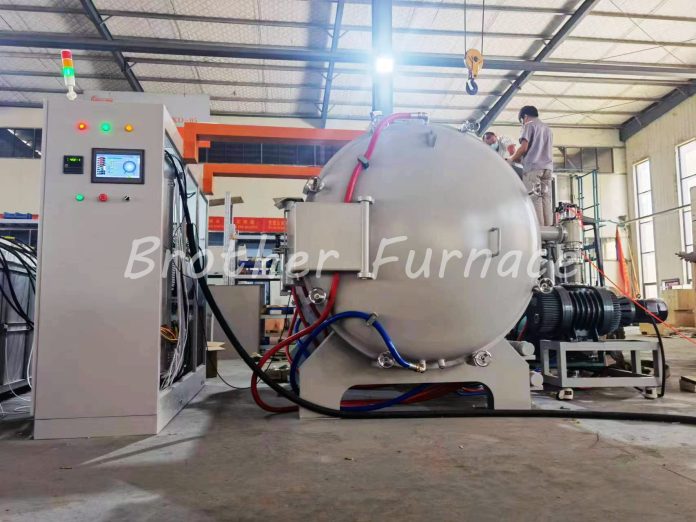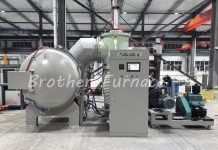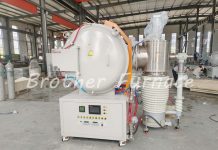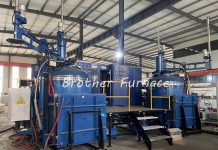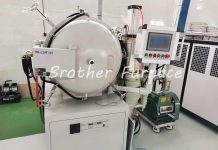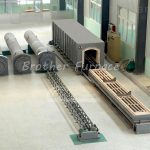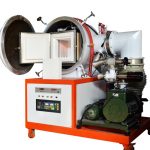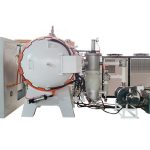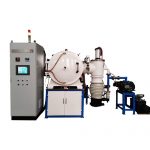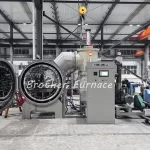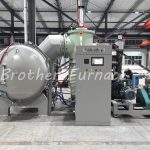The Vacuum sintering furnace is a type of lab or industrial furnace specifically designed for the sintering process, conducted under vacuum conditions. Sintering is the process of compacting and forming a solid mass of material using heat without melting it to the point of liquefaction. Here’s a comprehensive overview of vacuum sintering furnaces:
What is a Vacuum Sintering Furnace?
A vacuum sintering furnace utilizes vacuum technology to create an environment free from atmospheric gas for the sintering process. It is commonly used in applications that require high precision and quality, like the manufacturing of ceramics, metal components, and certain types of composite materials.
1700C Vacuum Sintering Furnace Video
How Does the Vacuum Sintering Furnace Work?
The vacuum sintering process begins by placing materials inside the furnace. A vacuum is then created to remove any atmospheric gas present in the furnace. The temperature is then gradually raised to the sintering temperature of the material.
The vacuum environment has several advantages for the sintering process:
- Prevents oxidation and contamination from atmospheric gases
- Allows for better control of the sintering process
- Enhances the physical and mechanical properties of the final product
The sintering process under vacuum conditions allows for atomic diffusion, leading to the formation of a solid, high-density product.

Key Components of a Vacuum Sintering Furnace
- Vacuum Chamber: This is the primary component where the sintering process takes place. It is designed to withstand high temperatures and vacuum conditions.
- Heating Element: This is responsible for providing the high temperatures required for sintering. Depending on the specific application, different types of heating elements may be used, including graphite, tungsten, or molybdenum.
- Vacuum Pump: This is used to create the vacuum within the chamber. There are different types of vacuum pumps, such as rotary vane pumps, diffusion pumps, and turbomolecular pumps, each having different vacuum levels and pumping speeds.
- Temperature Control System: This is crucial for controlling the heating rate, sintering temperature, and cooling rate. It often includes a thermocouple to measure the temperature and a control unit to adjust the heating element’s power.
- Loading System: This is used for loading and unloading the materials to be sintered. It can be manual or automated, depending on the size and complexity of the production process.
- Water Cooling System: for cooling the furnace shell and the vacuum pump.
Vacuum Sintering Furnace Applications
Vacuum sintering furnaces are used in a diverse range of industries, including:
- Aerospace: Sintered components are commonly used in aerospace applications because of their high strength-to-weight ratio and resistance to extreme temperatures.
- Automotive: Vacuum sintering is used to manufacture various automotive parts, like gears and sprockets, that require high precision and durability.
- Medical: The production of medical devices and implants often uses vacuum sintering to achieve superior product quality and biocompatibility.
- Electronics: Microelectronic components and semiconductors often require vacuum sintering to enhance their electrical properties and reliability.
- Advanced ceramics, powder metallurgy, etc.
In summary, vacuum sintering furnaces are essential in many manufacturing processes that require high precision, a controlled atmosphere, and superior product quality. Understanding their functioning, components, and applications can provide valuable insights into their role in modern industry.
See the details of our Vacuum Sintering Furnace…
If you Need a Quote or have any questions, please do not hesitate to Contact Us.
Follow us on Facebook

